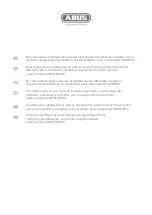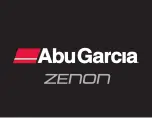
Operation Manual / TPL76-C
Maintenance
5
Cleaning turbine blades and nozzle ring
in operation
5.4
Page 63
© Copyright 2016 ABB. All rights reserved.
D
ec
em
ber
2016
H
ZT
L2485_
EN
R
ev
is
ion
D
When cleaning the turbine components during operation, use wet clean-
ing. This cleaning method has been tested and approved by ABB Turbo
Systems.
Prerequisites for wet cleaning are that the engine builder approves the
process and his instructions are followed.
Wet cleaning makes use of various effects. Depending on the composition
of the contamination, the individual effects with their different levels of in-
tensity have a varying influence on the cleaning result:
Erosion
The dirt is removed by the mechanical action of the impacting water
droplets.
Solubility
Water solubility of the contamination deposits in water.
Thermal shock
Spalling of contamination due to temperature difference.
CAUTION
Corrosion and deposits when cleaning
Damage and impairment of turbocharger parts due to salt water and
cooling water additives
Don't use salt water for cleaning, but only clean fresh water.
Components at the turbine end are not cleaned until the engine has been
started or the engine load reduced. The exhaust gas temperature must
not exceed the value specified in the respective cleaning instructions (see
section Prerequisites
CAUTION
Reduced service life of the components
Failure to comply with the minimum stabilisation time before cleaning,
the prescribed turbine inlet temperatures and the drying time after
cleaning significantly reduces the expected service life of the compo-
nents.
Comply with the cleaning parameters given in the tables.
In the case of V-engines with several turbochargers on each engine, we
recommend parallel cleaning of both turbochargers. This cleaning process
is faster and the risk of turbocharger surging is reduced. We recommend
finding the most suitable method by performing trials.
Cleaning method
Principle of wet cleaning
V-engines
















































